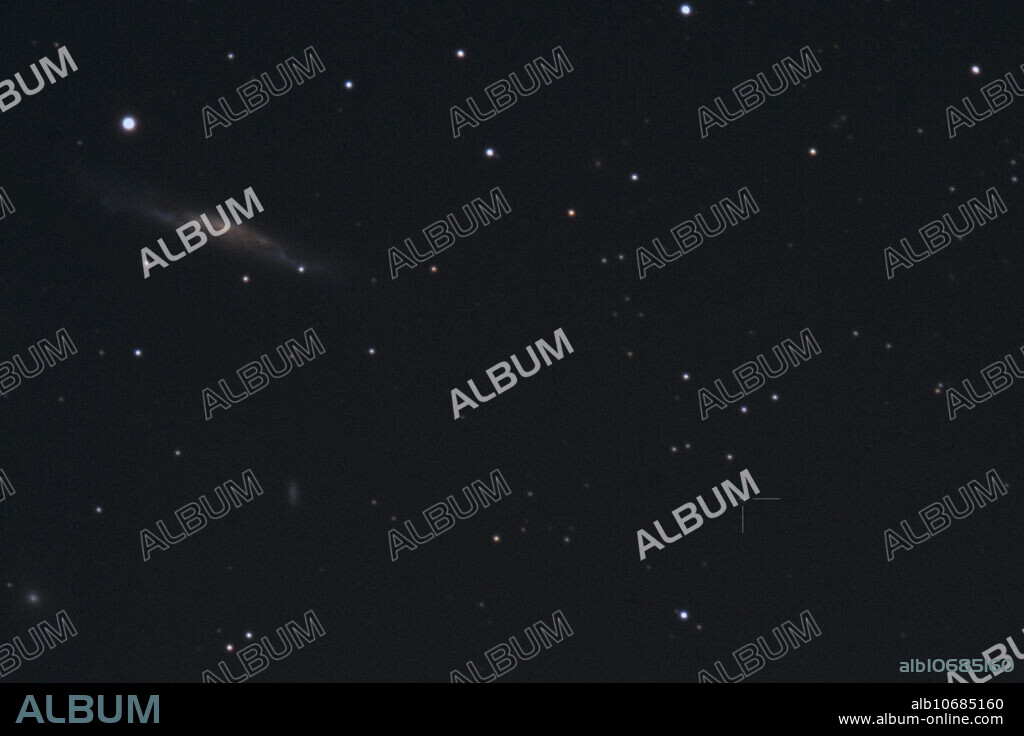alb10685160
Quasar 8C 0958+561

|
Zu einem anderen Lightbox hinzufügen |
|
Zu einem anderen Lightbox hinzufügen |



Haben Sie bereits ein Konto? Anmelden
Sie haben kein Konto? Registrieren
Dieses Bild kaufen

Titel:
Quasar 8C 0958+561
Untertitel:
Siehe automatische Übersetzung
8C 0958+561 is a quasar that is gravitationally lensed by a closer galaxy forming twin images of the original quasar. The quasar is also designated as Q0957+561 and the two components are designated as QSO 0957+561 A and QSO 0957+561 B. Component A is the northernmost one to the right in this image. The great mass of the intervening galaxy, and the galaxy cluster that in which it is located, lenses the quasar and warps Einsteinian space-time, causing two images of the quasar to appear to be angularly separated. The quasar lies at a distance of 8.7 billion light-years. The lensing galaxy, YGKOW G1, lies at a distance of 3.7 billion light years. The Twin Quasar gives direct observational evidence for Einstein's theory of general relativity. The time delay in the light arrival from the two images has also been used as an independent measurement of the Hubble constant which relates a galaxy's distance to its recession velocity because of the expansion of
Bildnachweis:
Album / Science Source / Gerard Lodriguss
Freigaben (Releases):
Model: Nein - Eigentum: Nein
Rechtefragen?
Rechtefragen?
Bildgröße:
3825 x 2550 px | 27.9 MB
Druckgröße:
32.4 x 21.6 cm | 12.7 x 8.5 in (300 dpi)
Schlüsselwörter:
 Pinterest
Pinterest Twitter
Twitter Facebook
Facebook Link kopieren
Link kopieren Email
Email
